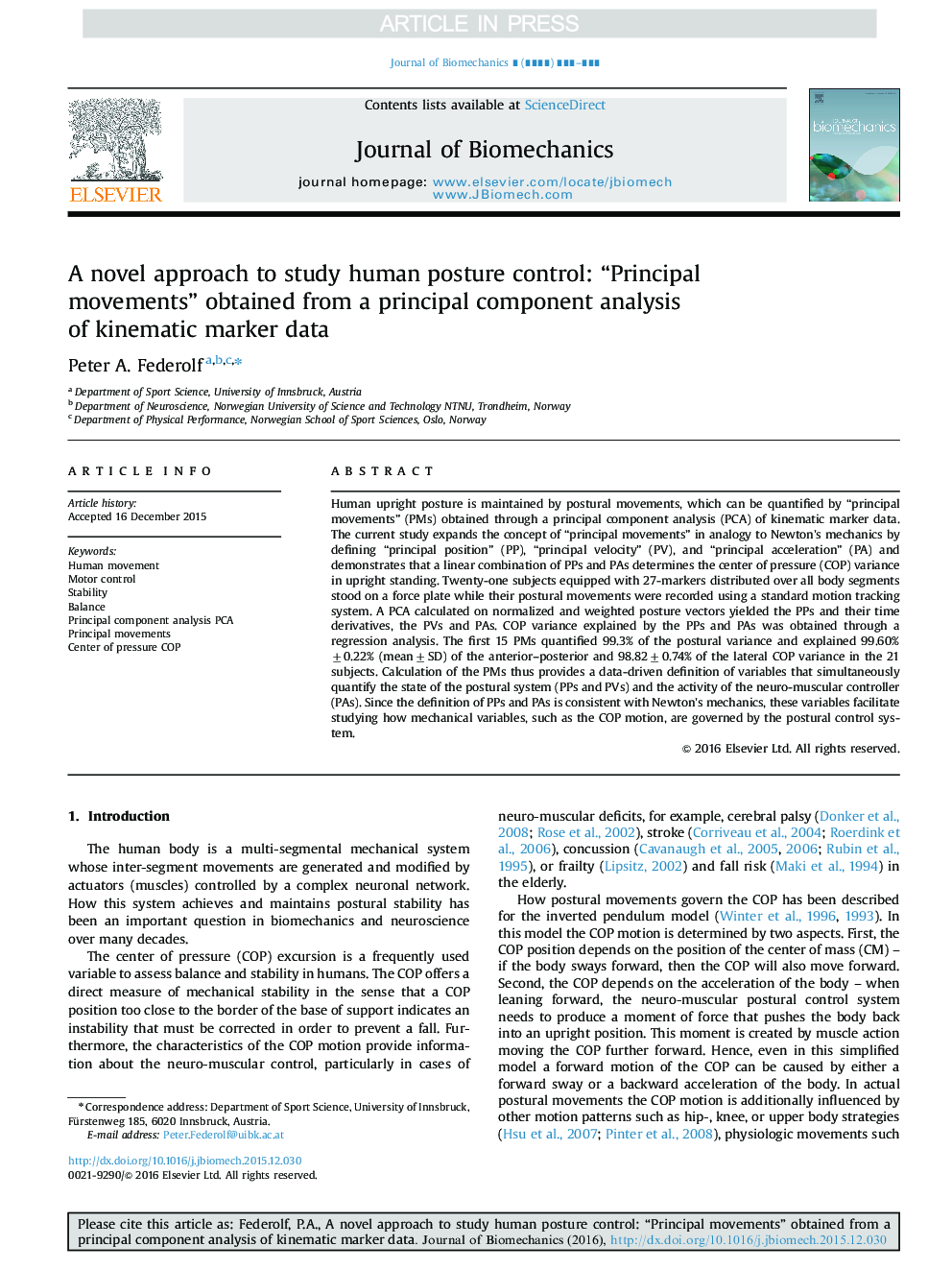| کد مقاله | کد نشریه | سال انتشار | مقاله انگلیسی | نسخه تمام متن |
|---|---|---|---|---|
| 10431133 | 910198 | 2016 | 7 صفحه PDF | دانلود رایگان |
عنوان انگلیسی مقاله ISI
A novel approach to study human posture control: “Principal movements” obtained from a principal component analysis of kinematic marker data
ترجمه فارسی عنوان
یک رویکرد جدید برای مطالعه کنترل استقرار انسان: جنبش اصلی؟ به دست آمده از یک مولفه اصلی تجزیه و تحلیل داده های نشانگر سینماتیک
دانلود مقاله + سفارش ترجمه
دانلود مقاله ISI انگلیسی
رایگان برای ایرانیان
کلمات کلیدی
موضوعات مرتبط
مهندسی و علوم پایه
سایر رشته های مهندسی
مهندسی پزشکی
چکیده انگلیسی
Human upright posture is maintained by postural movements, which can be quantified by “principal movements” (PMs) obtained through a principal component analysis (PCA) of kinematic marker data. The current study expands the concept of “principal movements” in analogy to Newton׳s mechanics by defining “principal position” (PP), “principal velocity” (PV), and “principal acceleration” (PA) and demonstrates that a linear combination of PPs and PAs determines the center of pressure (COP) variance in upright standing. Twenty-one subjects equipped with 27-markers distributed over all body segments stood on a force plate while their postural movements were recorded using a standard motion tracking system. A PCA calculated on normalized and weighted posture vectors yielded the PPs and their time derivatives, the PVs and PAs. COP variance explained by the PPs and PAs was obtained through a regression analysis. The first 15 PMs quantified 99.3% of the postural variance and explained 99.60%±0.22% (mean±SD) of the anterior-posterior and 98.82±0.74% of the lateral COP variance in the 21 subjects. Calculation of the PMs thus provides a data-driven definition of variables that simultaneously quantify the state of the postural system (PPs and PVs) and the activity of the neuro-muscular controller (PAs). Since the definition of PPs and PAs is consistent with Newton׳s mechanics, these variables facilitate studying how mechanical variables, such as the COP motion, are governed by the postural control system.
ناشر
Database: Elsevier - ScienceDirect (ساینس دایرکت)
Journal: Journal of Biomechanics - Volume 49, Issue 3, 8 February 2016, Pages 364-370
Journal: Journal of Biomechanics - Volume 49, Issue 3, 8 February 2016, Pages 364-370
نویسندگان
Peter A. Federolf,
